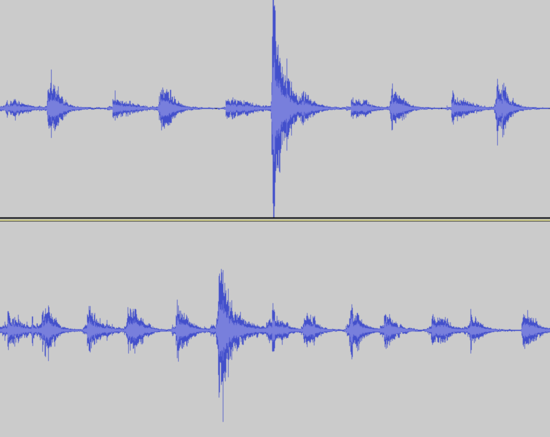I recorded myself playing around with a tambourine, and I was somewhat surprised to see what it looked like:

(mp3)
I'm thinking of it as four notes, and I hear four notes, but there are really more like eight. As I start to move my wrist to play a note there's a small jingle, and then a larger jingle when I complete the movement. The larger jingle is on the beat, but without the early one it doesn't sound like a tambourine. This two part sound is probably why our onomatopoetic term is "jingle".
If I want to recreate this with sampling, one important question is whether the spacing depends on tempo. If the jingle is longer at lower tempos and shorter at faster tempos, then I need to treat it as two sounds, while if the jingle is always the same length but played more or less frequently, then I can take the whole jingle as a sample.
It looks to me like it's the latter:

The distance between peaks of the jingle looks like ~100ms with both fast and slow playing. In the slow playing (top) the peaks of a jingle are closer to each other than to the peaks of adjacent jingles, while in faster playing (bottom) the peaks are more evenly spaced.
It looks like I only need two samples. First, a free jingle (1, 2, 4):
(wav)
And then a, louder, stopped jingle (3):
(wav)
One thing that makes this tricky is that this is very "slow to sound". You need to trigger the sample ~100ms before you want the beat to fall. In my stage setup I tap the downbeats and it predicts the upbeats, so I handle this by, for the tambourine, additionally predicting the next downbeat so it can anticipate it by 100ms.